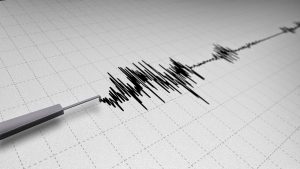
A new study on how people feel the effects of earthquakes illustrates the value that members of the public can add to the scientific research process.
Investigators used crowdsourced data from the Internet to investigate the areas of Italy where earthquakes are felt. The team found that intermediate-depth earthquakes in Greece can often be felt in Italy, much further from the epicentre than would normally be expected. But generally, the earthquakes are felt by people on the African side of the Africa-Eurasia plate boundary while most of the people on the European side of the plate boundary do not feel the earthquake.
“The findings indicate that plate boundaries are, in some cases, the boundaries of areas in which earthquakes are felt,” said Dr. Paola Sbarra, lead author of the Terra Nova study.
Reference:
Paola Sbarra et al, Role of African-Eurasian plate setting in the felt areas of intermediate-depth earthquakes: an investigation using crowdsourced data, Terra Nova (2016). DOI: 10.1111/ter.12245
Note: The above post is reprinted from materials provided by Wiley.










